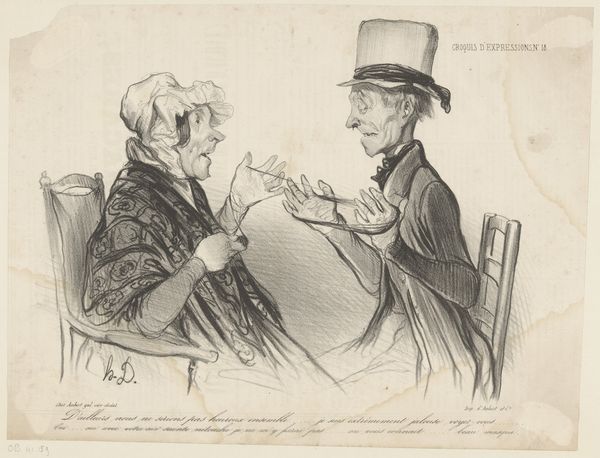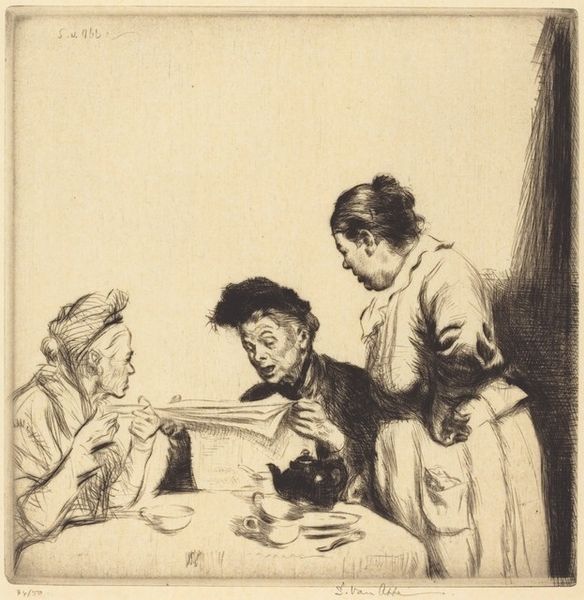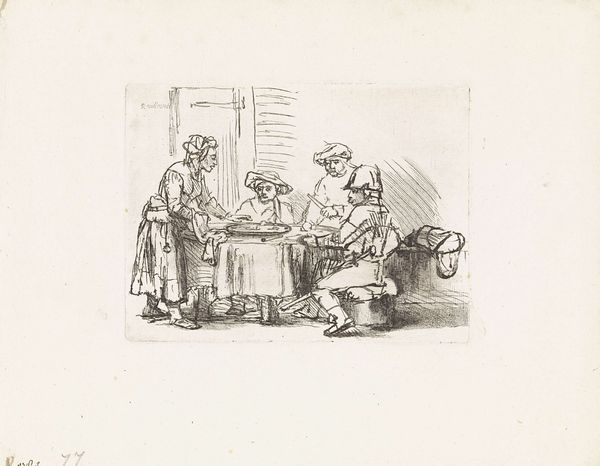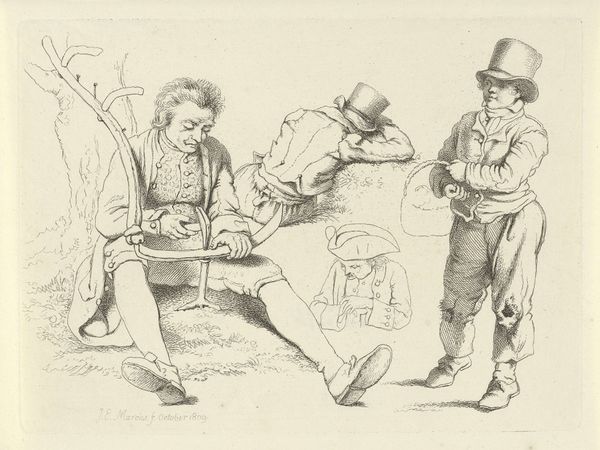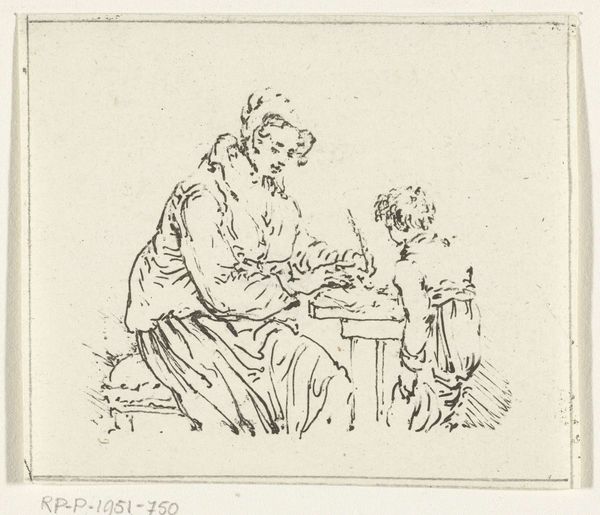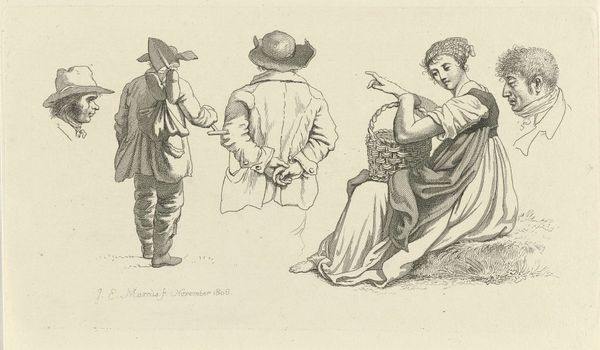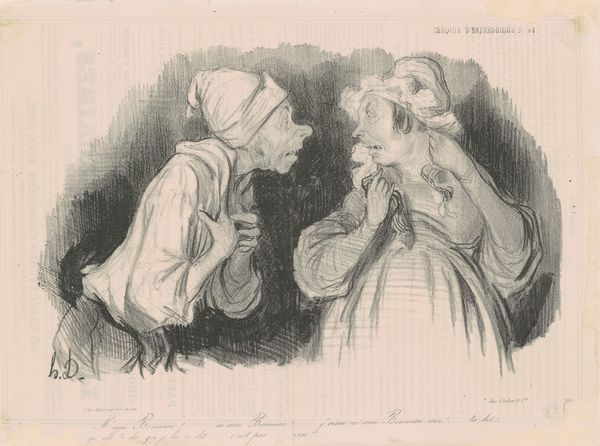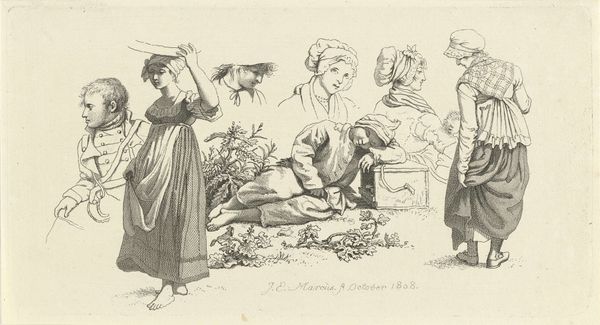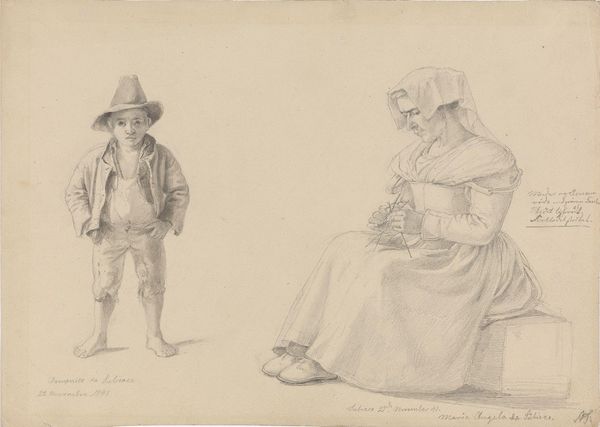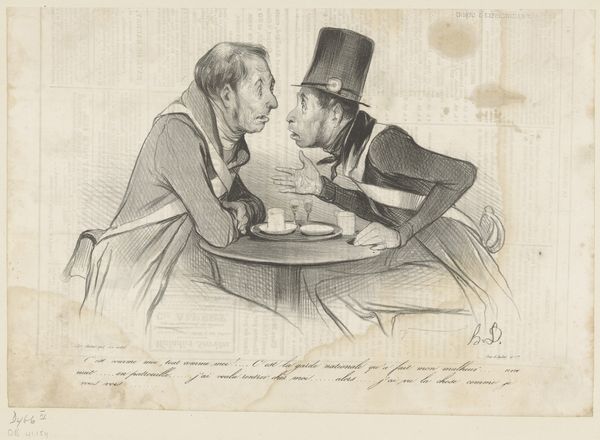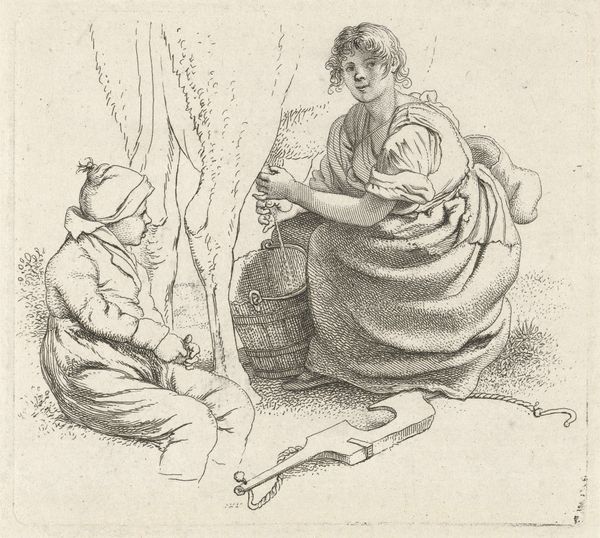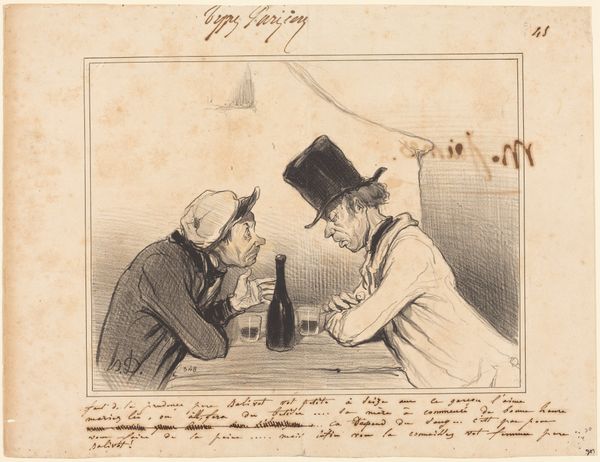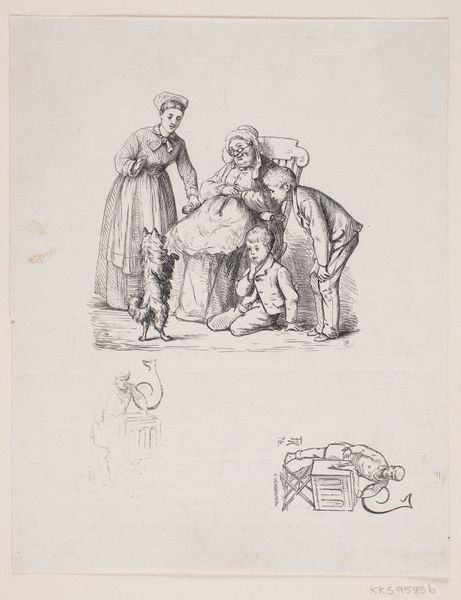
drawing, pen
#
drawing
#
imaginative character sketch
#
neoclacissism
#
facial expression drawing
#
light pencil work
#
pencil sketch
#
caricature
#
cartoon sketch
#
personal sketchbook
#
idea generation sketch
#
sketchbook drawing
#
pen
#
portrait drawing
#
genre-painting
Dimensions: height 129 mm, width 174 mm
Copyright: Rijks Museum: Open Domain
Editor: This is "Studieblad met een liggende man en twee dames," a drawing made in 1809 by Jacob Ernst Marcus, housed in the Rijksmuseum. It feels like a snapshot of everyday life, almost like a cartoon! I’m struck by the informality of the figures. What do you see in this piece? Curator: I see an interesting interplay of social codes and artistic conventions. On one level, we're presented with a genre scene, seemingly depicting a moment of leisure or perhaps instruction. But the ‘cartoonish’ style you pointed out pulls us away from a straightforward reading. Given that Marcus was working during a time when Neoclassicism was dominant, how does this work either conform to or challenge the established norms of public imagery? Editor: That’s a good question! I guess Neoclassicism was all about the grand, the idealized. And this feels, well, more down-to-earth. It's not heroic, more observational, capturing people in unguarded poses. So it deviates from that. Curator: Exactly. Consider also the rise of a newly empowered merchant class at the time. Art increasingly moved beyond serving aristocratic or religious functions and catered to bourgeois tastes, where scenes of everyday life held appeal. Does the artist’s technique also hint at the evolution of art at that time? Is there a shift away from the precise linearity associated with traditional drawings? Editor: Now that you mention it, it's more freely sketched. Like he was focusing on capturing a fleeting moment more than perfect accuracy. Curator: Indeed. Perhaps this drawing signifies art responding to broader cultural shifts. What’s your perspective now, having thought about these points? Editor: It’s so interesting to think about it as a reflection of changing social values, making art relatable to more people. Thanks, I learned a lot. Curator: It's a valuable reminder that art is seldom created in a vacuum. Exploring it from a socio-political view point helped us place it in historical context and understand its intended message.
Comments
No comments
Be the first to comment and join the conversation on the ultimate creative platform.
